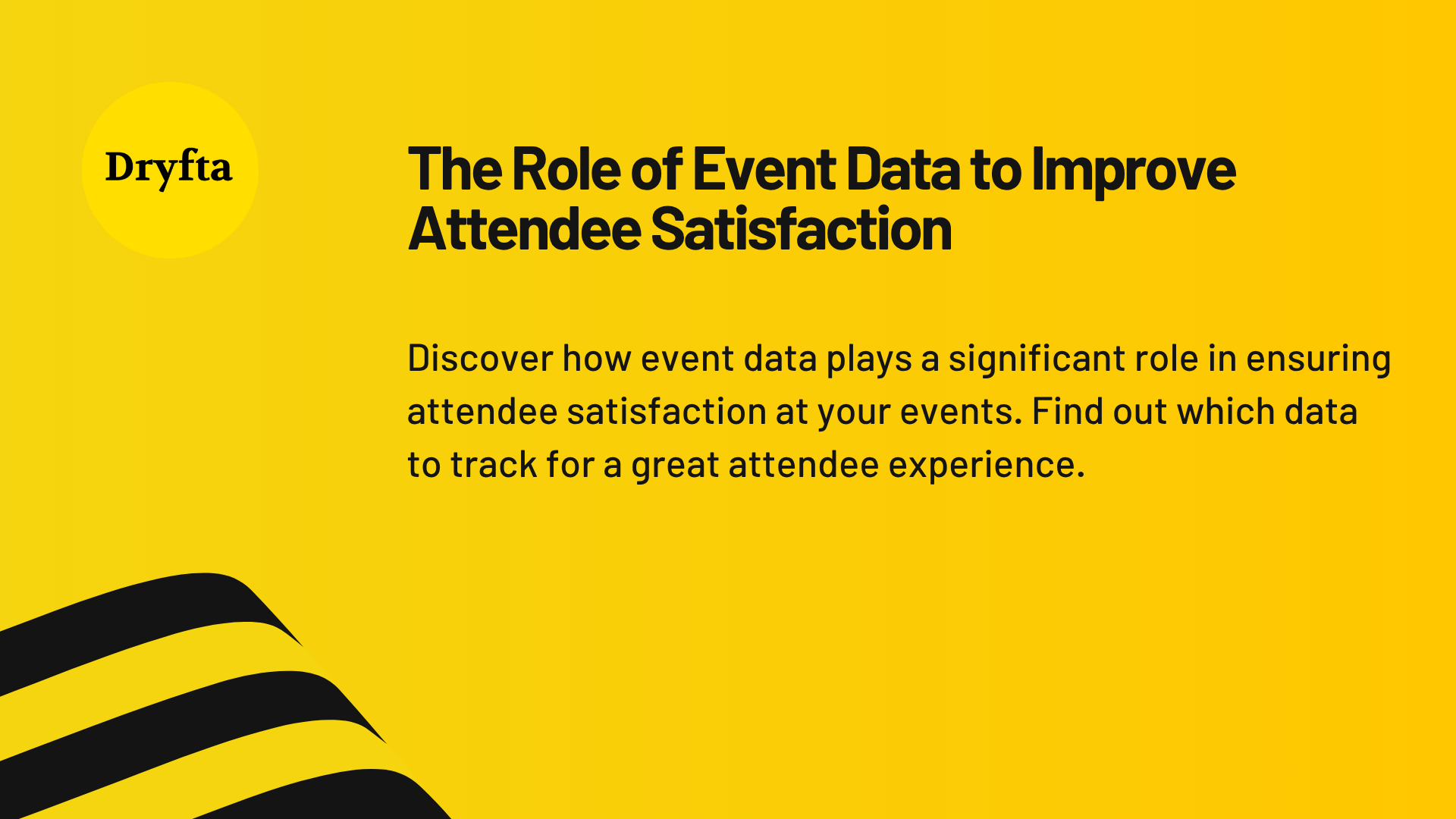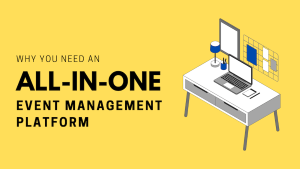
Effective decision-making is at the heart of every successful event. It’s only possible to make accurate decisions if you have the right set of data at your disposal. Planners and organizers today are relying on data to ensure optimum attendee satisfaction at their events. Without access to timely event data, it’s easy to miss out on opportunities to improve attendee engagement and satisfaction.
According to Fielddrive, 24% of companies are spending between $10,000 and $50,000 on data analytics. Now the question is, how to use the event data to ensure a brilliant attendee experience?
In this blog, we have discussed the importance of event data in maintaining attendee satisfaction. We have also explained about the specific elements to consider when monitoring the event data.
What is Event Data and How to Analyze It?
Event data is the information that organizers collect before, during and after an event. The information may vary based on the different event types, such as hybrid, in-person or virtual. For instance, in-person conferences can highlight physical attendance and session participation. Similarly, virtual conferences can focus on attendee interaction rates and login times.
Event data consists of various metrics that provide in-depth details of your conferences. Every information has an important role in learning about attendee experience and improving your event’s success.
How to Improve Attendee Satisfaction with the Help of Event Data
Understanding how to use relevant data to improve attendee experience is essential. Hence, we have mentioned several ways to use data to your event’s advantage.
Find the Best Engagement Methods
The success of your event relies on how involved your academic conference attendees are with your event. It’s important to think of ways to hold their attention. You must keep things interesting and encourage the attendees to take on a more active role in the event.
Now, the question is, how to know which engagement methods work well with your attendees?
Relevant event data helps detect the most appropriate engagement methods. For example, you can check:
-
- Audience participation in your interactive sessions
- Social media shares by participants
- Number of content downloads
When you assess this data, it helps you understand which engagement methods are working best with your event audience.
Understand the Major Outcomes
Apart from setting goals and deciding on your event engagement methods, you must watch the event outcomes closely. These outcomes can be revenue, new leads, attendee satisfaction and more. You gain a better understanding of your event’s performance and areas of improvement by monitoring these outcomes.
These tasks are anything but simple. Moreover, adding things to your to-do list only makes your work more time-consuming. That’s when automation can benefit you. Automating repetitive tasks improves efficiency, saves time and minimizes expenses.
For instance, you can check your feedback forms, live polls and social media engagement if your event data shows poor attendee engagement. This helps you understand the pain points of the participants and address them before planning future events.
Collect Basic Details of Attendees
Make sure you gather basic attendee information for your future events. Check how many returning and new attendees your event is drawing. If the number of returning attendees is low, check what’s causing them to lose interest.
Do new attendees know about your event? Or are they just discovering you? Consider these questions when it comes to attracting new attendees to your event.
Use the Most Effective Marketing Channels
This is something every event marketer and organizer already knows. You must promote your event through the right channels to the right audience. Now you may ask, how to know which marketing channels are the most effective? Event analytics can help identify the best channels to promote your conferences. With the help of event data, you can track the number of attendees who registered through each channel and the conversion rate.
The relevant data helps you determine which channels offer the best return on investment. For instance, if you’re receiving audience engagement through LinkedIn, you can divide your budget for a marketing campaign. This, in turn, results in higher attendance rates.
Personalize the Ticket Types for Your Event
Not everyone who attends your conferences will buy the same tickets. Introducing different ticket types helps cater to the audience’s preferences more effectively. This leads to better revenue generation.
For example, you can sell general event access, which allows entry to your event for $400-550. You can also sell VIP tickets for a higher price, which comes with a more personalized experience.
Event data can help you customize your ticket types. You can determine the number of tickets sold for each type, the revenue accumulated and the conversion rate. This helps you determine the most popular ticket types and change your ticket pricing based on the details. If you notice a limited number of VIP ticket sales, attendees may not be keen on paying a high price for your conference.
You need to understand the concerns of attendees and deal with them efficiently. You can offer benefits that add value to your audience and justify the higher ticket price.
Check Registration and Attendance Trends
Track the number of tickets sold with the help of your event check-in statistics. Find out if there is any discrepancy.
Are attendees missing the check-in area at the event? Changing the registration locations or having additional check-in counters may be helpful.
If you notice a decent number of registrations and less footfall on the actual event, this means people are not attending. You can send email reminders before the event.
Check when, how and where attendees registered and bought tickets. Did the price increase result in fewer registrations? Did certain pricing strategies increase sales? Make sure to modify the ticket pricing if necessary and promote your event where attendees are most likely to respond.
What Kind of Event Data Should You Track?
Your event data consists of several elements that you must pay attention to. These elements include:
Session Attendance
Find the sessions that were most popular by assessing overall session check-ins and participation data. You can utilize these details to plan future sessions and learn about the topics that attendees find more engaging.
Tickets Sold
Check your event’s ticket sales with the help of your event’s ticketing platform. This information allows you to understand attendee interests. It helps you plan your marketing activities as well.
Landing Page Conversions
Use analytics to check how many visitors go to your event’s landing page and convert into registered attendees. This conversion rate highlights whether your landing page is getting steady traffic or not.
Additionally, it also shows whether the landing page is converting visitors into attendees.
New And Returning Attendees
Find out how many new attendees have joined your event, as well as the number of returning attendees.
Checking this detail over multiple events helps gain valuable insights into audience retention. This also allows you to focus your marketing efforts on both new and loyal attendees.
Wrapping Up
Data-driven decision-making is an essential part of event technology today. Hence, event organizers should use the right data while organizing events so that attendees have a memorable experience. From strategy to execution, event data simplifies all aspects of putting together an event.
Dryfta is the best platform to help you accomplish this. It helps with data accuracy, seamless integration and session insights all from one unified system. Request a demo today and watch Dryfta in action.




